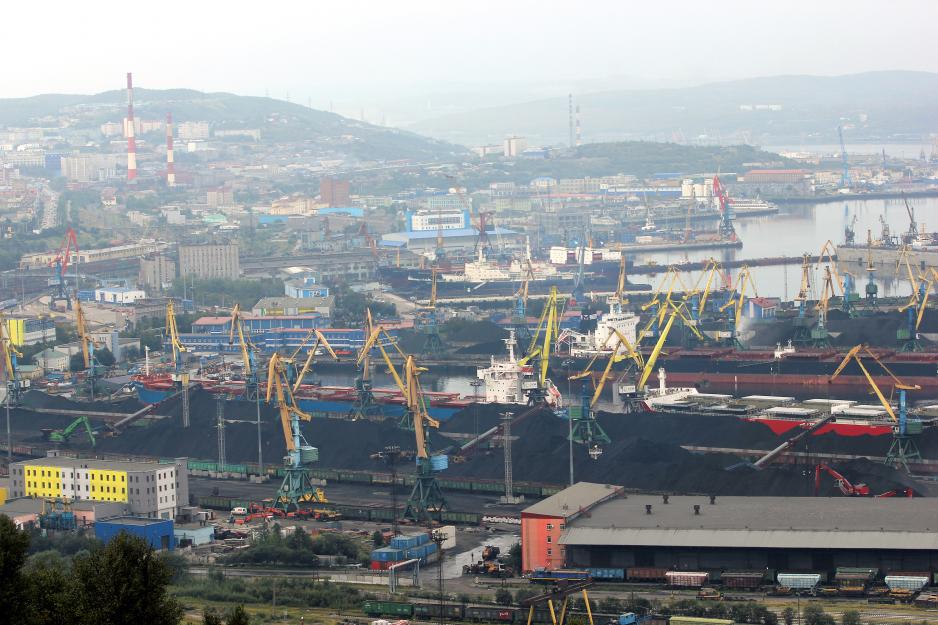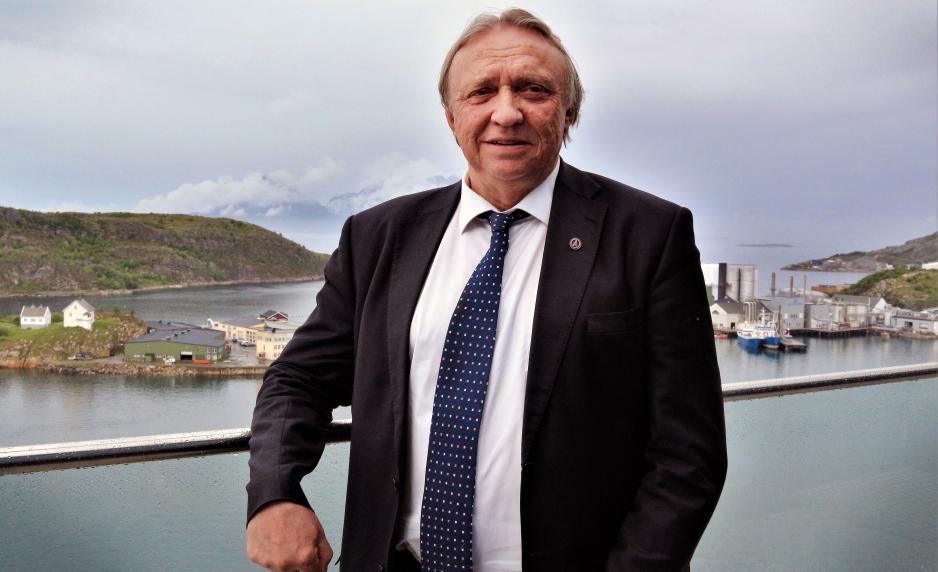Norwegian Export to Russia Increases Heavily, Chamber of Commerce Asks Maritime Industries to Pay Attention

Murmansk is the world’s largest city north of the Arctic Circle, and it is Russia’s most important Arctic port. Norwegian maritime companies can make much money from export to Russia, sasy the Norwegian-Russian Chamber of Commerce. Photo: Amund Trellevik
Sales of Norwegian fish farming technology to Russia is booming. In one year, export has increased by 23 percent and currently amounts to NOK 1.3 billion. The Norwegian maritime sector can make good money from trading with Russia, say the Fiskerstrand shipbuilders. 25 percent of its turnover comes from Russian shipowners.
“Even though the level of Norwegian export is low compared with what it was in the time before the restrictive measures introduced in 2014, we are nevertheless very pleased that the increase continues”, says Jarle Forbord, Chair of the Norwegian-Russian Chamber of Commerce, which works to promote trade between Norway and Russia.
Figures from the Chamber of Commerce’s 2019 report shows that Norwegian companies exported goods to Russia for more than NOK 3 billion (€ 300 mill.). This represents an increase of 23.1 percent from 2018. The increase is largest in particular in the areas of sales of machines and technical equipment for the maritime sector.
Measured in money, this export to Russia currently constitutes NOK 1.3 billion, which represents a growth of more than 60 percent in one year.
The Chamber of Commerce has in recent years worked hard to increase export of Norwegian technology and equipment in the fish farming industry to Russia, and this work has now come to fruition, Forbord says.
“We have not seen such an increase in technical export in a long time. It is rather pleasant”, he says and emphasizes that the Chamber of Commerce is continuing to work to increase exports in the maritime sector.
Nevertheless, exporting Norwegian technology in fish farming to Russia has not been void of complications. Some companies have experienced problems with getting paid, as some banks have hesitated accepting payments out of fear of breaking the western sanctions regulations.
“There have been some problems with payment difficulties. Banks have been reluctant to accepting payments as they have feared that this would be a violation of the American sanction regulations, and that they thus would risk losing their so-called dollar license. The fear has been that accepting a transaction would trigger an American reaction. Russia is still a small trade partner for Norway, when compared with the USA and the EU, and thus one proceeds very carefully here”, Forbord says.
How do you work to increase exports further?
“We will continue to promote the Norwegian marine sector and companies all over Russia; east, south and north. We have had some 7-8 promotion meetings with Russian business and are now sitting down together with the industries to discuss the way ahead. We notice a huge interest for cooperation with Norway in these areas”, Forbord says.
Nevertheless, the trade imbalance between Norway and Russia is still significant. Russian exports to Norway amounted to NOK 17.3 billion in 2019. Approximately a third of this consists of oil in transit through Norwegian territory.
“There is still reason to point out the imbalance in bilateral trade. We are hoping that the Russian side will strive to purchase more from Norway”, Forbord says.
Why is trade between Norway and Russia so important?
“It is very important in and of itself because it contributes to maintaining jobs on both the Norwegian and Russian sides. Both countries are big players in the maritime area and should have a more extensive and broad cooperation about the maritime sector. I believe the maritime sector can be key in the transition we want for Norwegian business”, says Forbord, who also suggests creating maritime industrial cooperation between the countries.
“We are working on this and have a series of meetings set up in this regard. The Russians are focused on location and want Norwegian actors to establish production in Russia. Some of our companies intend to do so”, Forbord says.

Jarle Forbord, Manager of the Norwegian-Russian Chamber of Commerce. Photo: Siri Gulliksen Tømmerbakke
Russia in northwestern Norway
One of the Norwegian companies that for the past two decades has made good money from maritime cooperation with Russia is Fiskerstrand shipbuilders on the island of Sula, outside Ålesund.
Rolf Fiskerstrand, CEO of Fiskerstrand Holding, says that reparation, maintenance and rebuilding of Russian trawlers accounts for 25 percent of the company’s annual turnover. Every year the shipbuilders have 20-25 Russian vessels at their slips. The company has some 110 employees and a 2019 turnover of NOK 400 million. There are also sub-suppliers and hired hands.
“We have worked towards Russian shipowners for 20 years and have accumulated significant experience. We have Russian-speaking members of staff. Another advantage is that we are located in a maritime cluster. You find all you need of spare parts, equipment, subcontractors and special equipment within one hour’s radius. That makes a stay with us efficient for our customers”, Fiskerstrand says. He boasts of their cooperation with the Russian shipowners.
“The Russians are satisfied with what we do. We have a big number of shipowners from Russia here every year and in total, our Russian customers are very important to us”, says Fiskerstrand.
What are your tips to other Norwegian companies that want to grow from cooperation with Russia?
“You have to know what you are venturing into. We have spent 20 years learning and feel that we know what we are doing. Russia has a different culture and regime from what we are used to at home, but if you do your homework and prepare well, there are vast opportunities”, Fiskerstrand says.
The Russian vessels arriving at Fiskerstrand shipbuilders are mainly trawlers for fishing in the Barents Sea. Fiskerstrand stresses that the vessels are in good condition, and that the jobs they do are all about modernizing and rebuilding.
“We install new equipment, rebuild and establish fish processing facilities onboard. The vessels can be here for six to seven weeks when they get in here”
So this is good business for all the companies in the regional maritime cluster?
“Haha, I believe each company must speak for itself.”
But you do not do this for free?
“No, we get paid for what we do”, Fiskerstrand says.
This article was originally published in Norwegian and has been translated by HNN's Elisabeth Bergquist.

